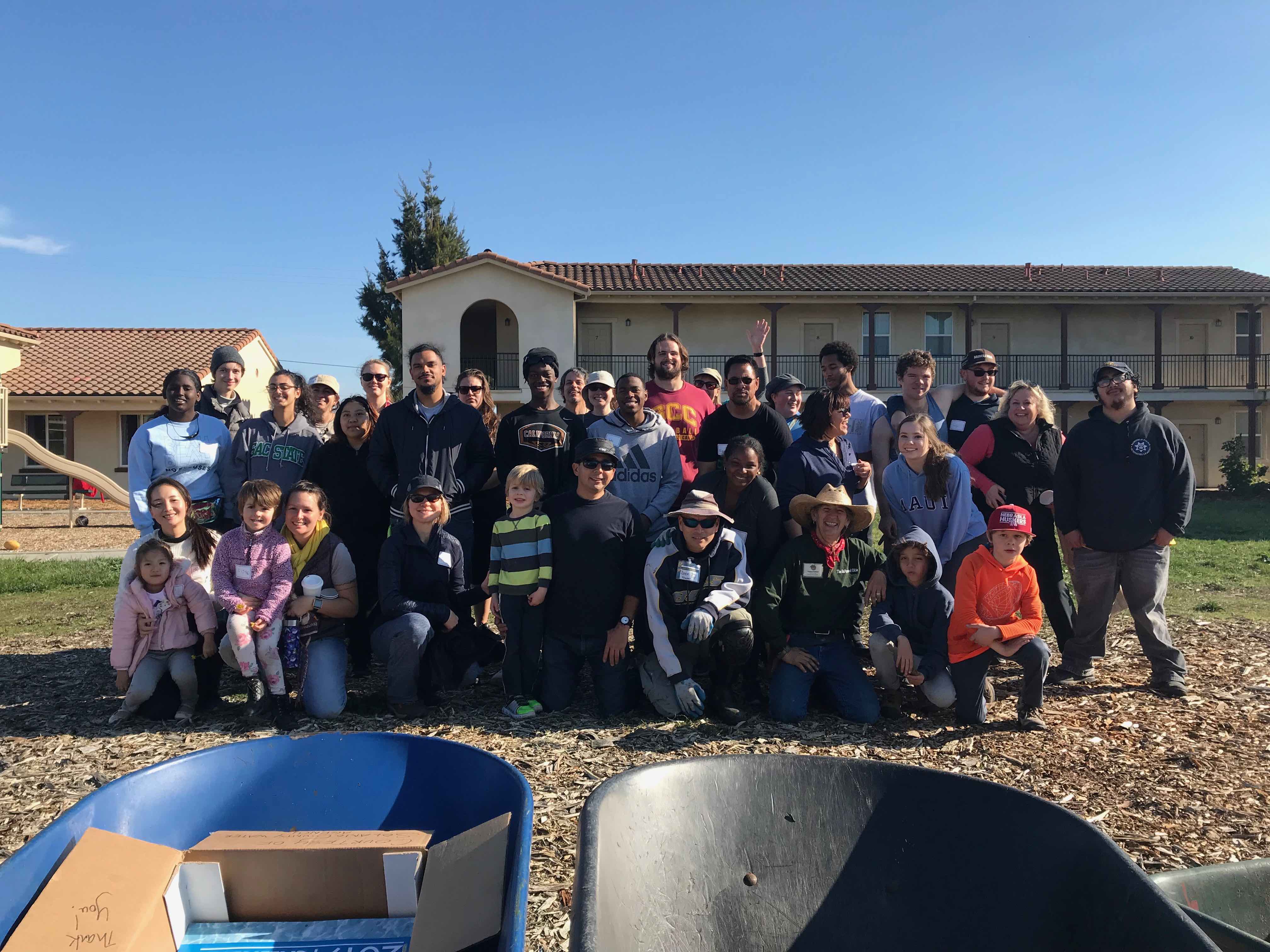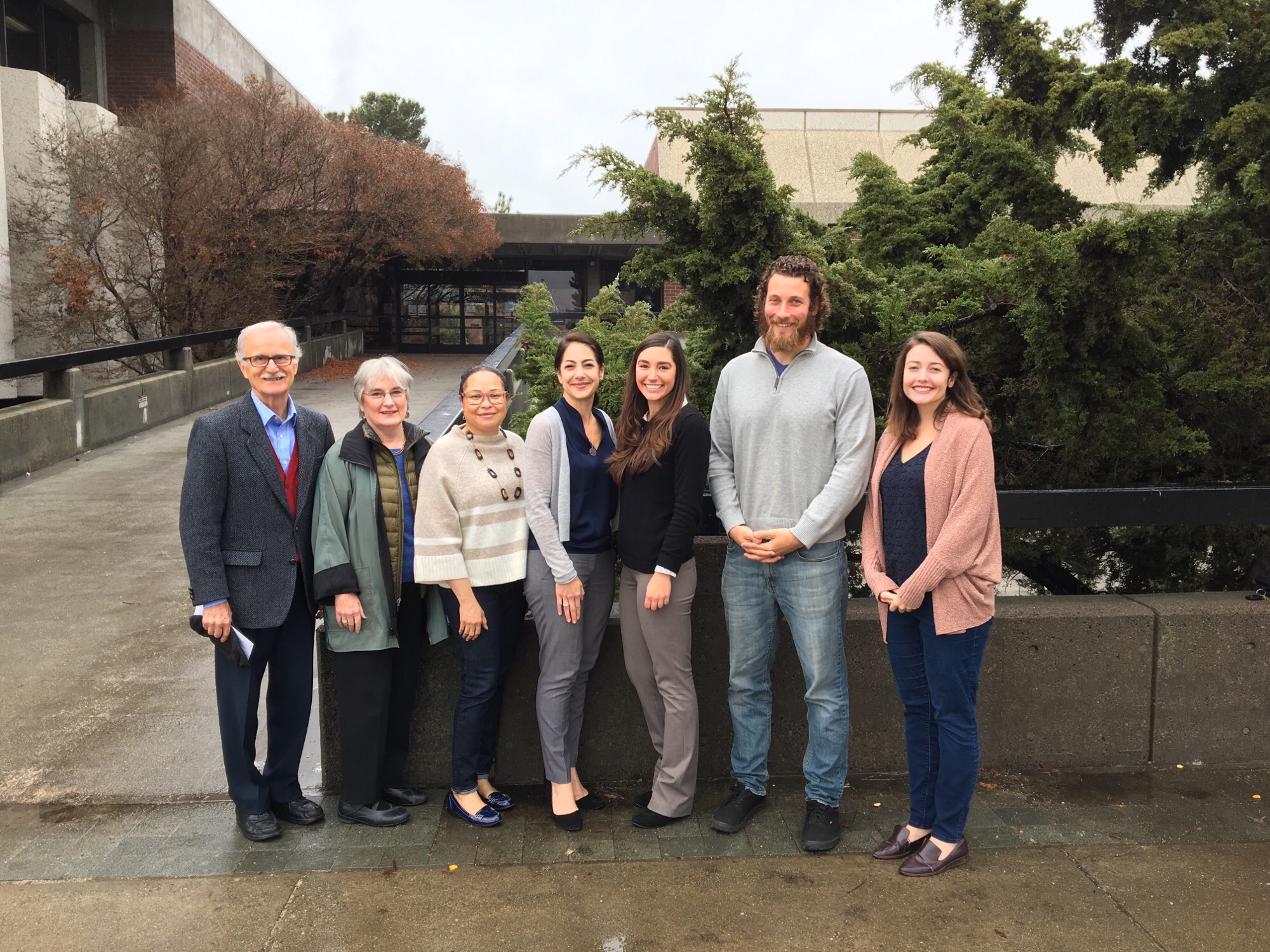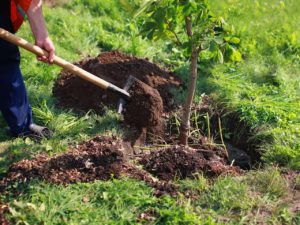Representatives from Sustainable Solano, Vallejo Commission for the Future and Greenbelt Alliance met with PG&E at the JFK Library in Vallejo on December 21st to celebrate the launch of the Resilient Neighborhoods Program
We can’t think of a more fitting way to celebrate our 20th anniversary than with the announcement of a new program that will help to expand our work in improving social, economic and environmental justice in Solano County: Resilient Neighborhoods.
What is “Resilience”?
You may have noticed the term “resilience” popping up more and more in the environmental community, and increasingly in mainstream conversations. The Community & Regional Resilience Network defines community resilience as “the ability to anticipate risk, limit impact, and bounce back rapidly through survival, adaptability, evolution, and growth in the face of turbulent change.” In short, resilience is about surviving and thriving, regardless of the challenge. It’s easy to understand why this topic is garnering so much attention today, as we face the reality of our changing climate – from droughts to heat waves, to the devastating fires that have ravaged our state. There is an urgent need to strengthen our cities’ capacity to adapt to these stressors, and we see this as an inspiring opportunity to develop a new holistic sustainability program that aims to help our cities better serve the needs of our residents today and into the future.
The Resilient Neighborhoods Program
The Resilient Neighborhoods program will drive the restoration of regenerative ecosystem services in our urban landscape to improve the social and environmental resilience of our communities. This program introduces a concept of shared solutions and collective actions to the community, in which a few nearby houses cooperate to install and enjoy various sustainability elements. Utilizing low-cost, low-tech measures, these clusters of homes will transform into a Resilience Hub. Informed by leading edge sciences, including biomimicry (which you can read more about here) and permaculture, we will facilitate the installation of sustainable solutions that can help transform our built environment from a resource sink, into a functioning producer of ecosystem services. This program has the potential to demonstrate that, block by block, neighborhoods can produce clean air, maintain clean water, create healthy soil, sequester carbon, reduce heat, and support biodiversity. These environmental benefits have a cascading effect into health and wellness and economic prosperity. In addition, when implemented in a cooperative model of shared services, they provide the framework for social benefits like disaster preparedness and community support networks.
The Resilient Neighborhoods program will be a collaborative effort with community partners, from city leadership to like-minded organizations, and, most importantly, the residents. This work is about empowering our citizens to take an active role in the stewardship of their local environment. By providing education, skill building, and much-needed resources, we hope to foster local champions that will help expand grass-roots movements and create more resilient cities across our county.
The Vallejo Pilot
The inaugural phase of this program will be launched this year in Vallejo, made possible by generous funding from PG&E and support from our partners at the Vallejo Commission for the Future and Greenbelt Alliance. Over the next twelve months we will complete two demonstration installations, each consisting of a small cluster of three to five residences in traditionally disadvantaged communities in need of revitalization. Each pilot Resilience Hub will receive a suite of sustainability measures tailored to its unique composition, addressing both the individual homes and surrounding communal areas.
Example measures that will be utilized to create these Resilience Hubs include:
- Laundry to landscape greywater systems
- Roofwater diversion & capture
- Bioswales
- Tree planting
- Shade structures
- Edible landscaping
- Adopting “cool” building colors
- Energy efficiency measures
- Solar power
- Water efficiency measures
- Disaster preparedness
By linking our Resilience Hubs with nearby community organizations we can also encourage engagement and collaboration within the larger neighborhood. Incorporating the same sustainability measures applied to the residences, these “Resilience Centers” will have the potential to serve as an oasis of shade and moisture during heat waves, offer a community garden space, facilitate disaster response and preparedness, and act as a central point for organizing neighborhood resources and communication.
All installations will serve as free educational workshops, open to the community at large. The work will be completed entirely by the community, for the community. The completed pilot Resilience Hubs will also serve as public educational platforms for years to come.
We have formed a skilled Advisory Board comprised of local experts and passionate partners to help us carry out this pilot program in Vallejo. The Board will provide guidance as we continue to hone our vision, aid in selecting locations and participants, and support efforts to build our capacity for expansion.
We will begin holding collaborative planning discussions with Vallejo residents in early February, and look forward to working with our neighbors to create meaningful change in the community.
Onward and Upward
These installations will demonstrate the social, environmental, and economic impact possible through small-scale collective action, and we are thrilled to have an opportunity to show proof of concept for this approach to community resilience, which we hope to expand across Solano County.
If you are interested in learning more or getting involved, please contact Resilient Neighborhoods Program Manager, Kassie Munro at kassie@sustainablesolano.org.




 Last December, we expanded our mission to promote environmental, economic, and socially just communities by partnering with Mission Solano, a local Fairfield homeless shelter, to install a demonstration food forest garden. We are pleased to announce that Sustainable Solano has received a grant from the California ReLeaf Social Equity Tree Planting Program that will fund the planting of 54 additional trees throughout the Mission Solano campus!
Last December, we expanded our mission to promote environmental, economic, and socially just communities by partnering with Mission Solano, a local Fairfield homeless shelter, to install a demonstration food forest garden. We are pleased to announce that Sustainable Solano has received a grant from the California ReLeaf Social Equity Tree Planting Program that will fund the planting of 54 additional trees throughout the Mission Solano campus!